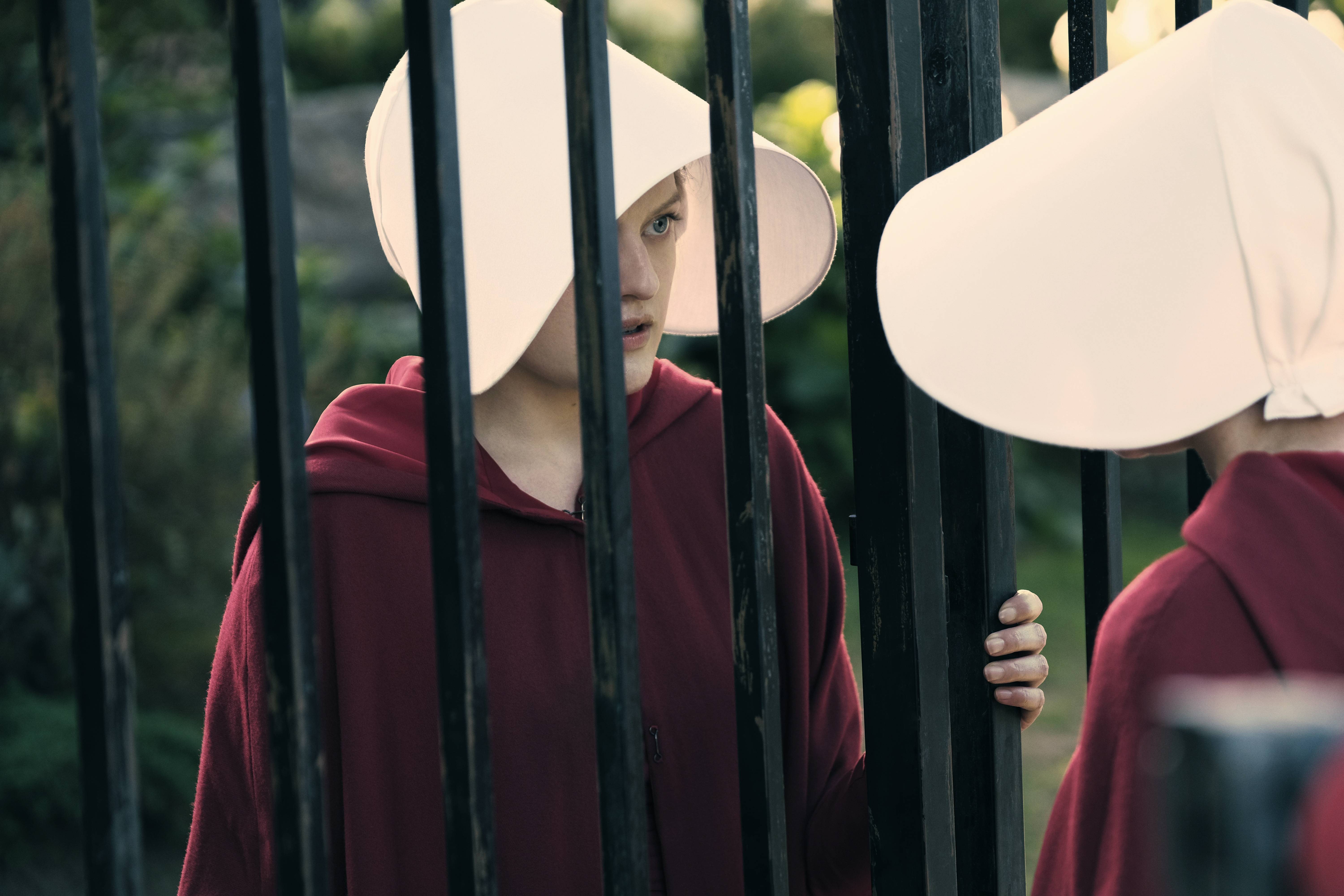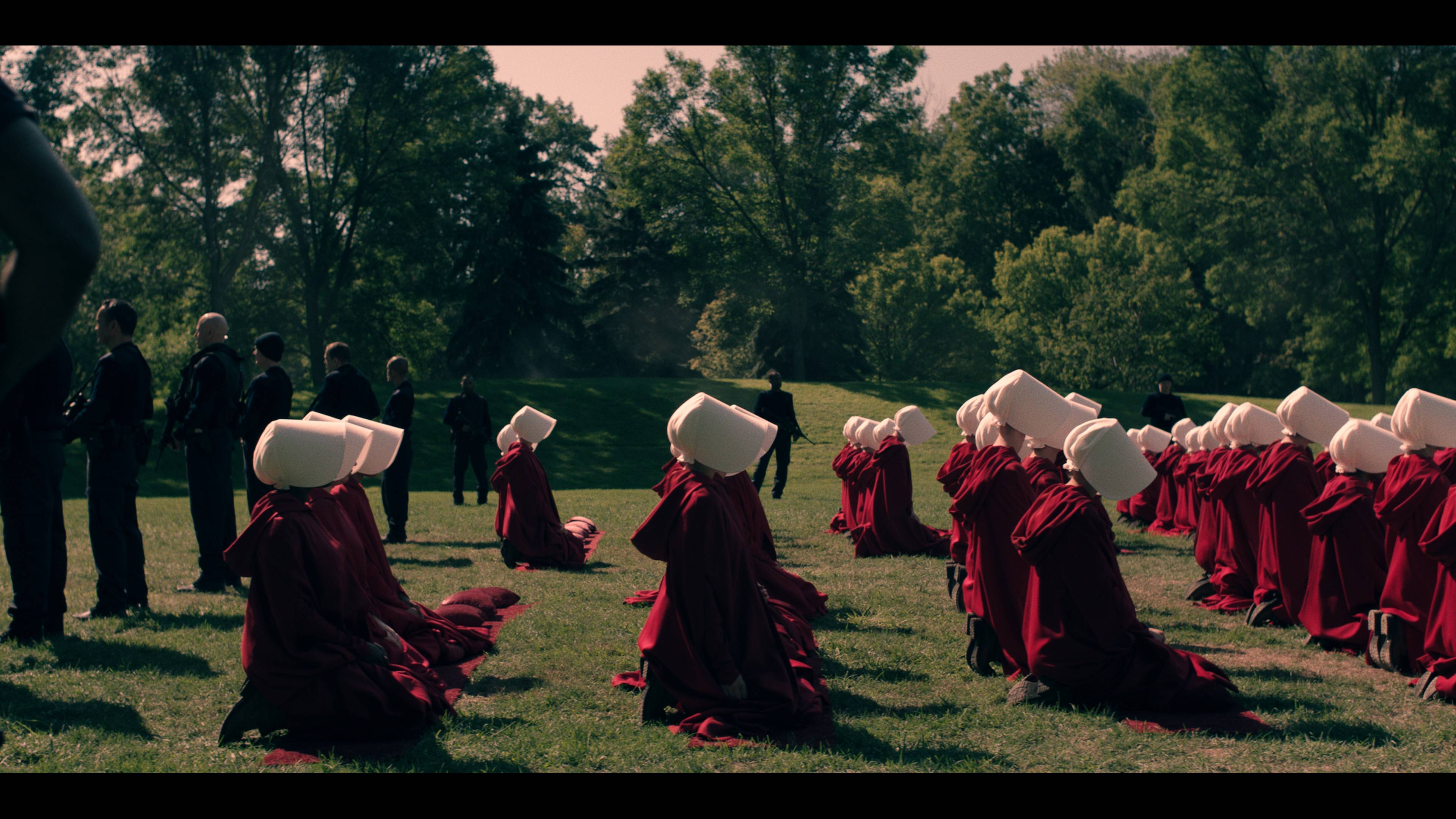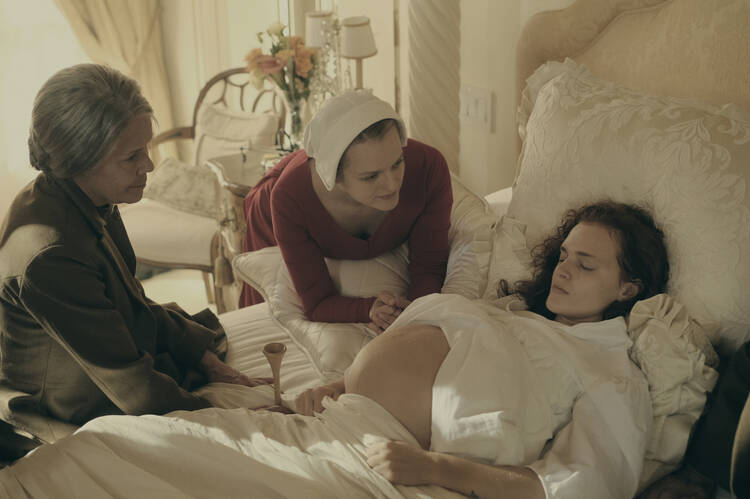The Blessed Virgin’s radical female presence opens up the possibility of a relationship with God for many Catholics. This is particularly true for women who struggle to recognize themselves in church structures, or perhaps even in images of Jesus, at first. Because she prevailed in impossible situations by the grounding of her faith, Mary has provided particular solace to the poor and vulnerable in Fatima, Lourdes, Guadalupe and well beyond. Her image is unique in its accessibility and pervasiveness.
Unfortunately, a historical overemphasis on Mary’s assumption, virginity and Immaculate Conception, to the eclipse of her other qualities, has led to impoverished popular images of her that, intended or not, too often reinforce patriarchal social structures. These incomplete images have also been used to create a rigid view of women, including Mary herself.
In her book Truly Our Sister, Elizabeth Johnson, C.S.J., who stresses that Mary is an avenue to God, not a feminine image of God, raises the voices of women who find over-idealized images of the Virgin Mary oppressive. She cites Margaret Cuthbert, an elderly South African woman, who decided with her all-women prayer group to omit two titles from the Litany of Loreto, “Mother inviolate, Mother undefiled,” which the women regarded as insulting to their blessed experiences of childbearing and sex.
Not all women feel that way. For some, it is not difficult to see—and admire—Mary’s purity alongside her inspiring displays of perseverance, autonomy and solidarity. A narrowed perception of Mary does exist, however, and that image is conducive to neither faith nor feminism. If anyone doubted the damage a shallow, sanitized Marian ideal of womanhood could inflict—on women, on faith and on the church—Margaret Atwood’s The Handmaid’s Tale shows us.
The original notion of the handmaid that intrigued Atwood, an agnostic, is well known to Christians. In many translations of the Bible, Mary uses this term to describe herself when accepting the responsibility for bearing Jesus. “Behold the handmaid of the Lord,” says Mary. “Be it done unto me according to thy word” (Lk 1:38).

In Atwood’s hellish, futuristic novel, which is the basis of a new television series of the same name on Hulu, the handmaid is a woman named Offred. Offred is one of many women separated from her family and enlisted to bear children for the ruling classes of a theocratic state. In Atwood’s dystopia, the handmaid must embody the one-dimensional caricature of Mary who has sometimes been used to restrict women’s roles: a walking womb; bounteous, quiet, complacent.
Before writing The Handmaid’s Tale, first published in 1985, Atwood came across a peculiar news story: A Catholic parish in New Jersey had been overrun by a sect within its congregation called The People of Hope, in which female members were relegated to the home, some of whom won the title of “handmaiden.” In Atwood’s fictional state, Gilead, where birthrates have plummeted, an even more extreme interpretation of a handmaid’s service to the Lord is enforced. These handmaids do not have autonomy like Mary—they do not volunteer—but are rather used for their fertility as punishment for transgressions. "We are two-legged wombs,” says Offred. “That's all: sacred vessels, ambulatory chalices."
"We are two-legged wombs,” says Offred. “That's all: sacred vessels, ambulatory chalices."
Offred, played by Elisabeth Moss, has daily duties that include tending to her fertility with regular exercise and balanced meals, walking every day to “buy” food with tokens and attending ceremonies when other handmaids become pregnant or give birth. Handmaids move about Gilead like robots, wary of expressing individuality or autonomy—for which they could be mutilated, killed or sent off to some other dreadful, unknown fate. Reading is forbidden; so is conversation, friendship, love, life. In their place are canned pieties: “Praise be,” “Under his eye” and, perhaps most notably, “Blessed be the fruit.”
Offred’s most important job is also the most horrific: She must have ritual, clothed sex with her “Commander” (Joseph Fiennes) in the presence of his wife so that she might carry the child they could not conceive together. Hulu’s representation of this ritual is fittingly awkward and alarming. During the act, Offred must lie in the lap of the Commander’s wife who looks on, pained, while gripping Offred’s hands. The camera is positioned above the bed, offering an uncomfortable view of Offred’s vacant face, her body disturbed by the Commander’s every movement.
As far-fetched as The Handmaid might seem at first, its strength lies in its pertinence. Yet the novel and the television show have different methods for asserting their relevance. While Atwood’s timeless setting has enabled the story to age well, the television series works hard at timeliness. The Hulu series opens with a pre-handmaid Offred in a car with her daughter and her husband. Their clothes are ordinary but their own. Offred’s hair is highlighted a bright blonde; her daughter peers from underneath a hoodie. Offred is alive with fear and love for her family and very unlike the hollow handmaid she will have to become in order to survive. In flashbacks, throwaway references to Tinder and other facets of online life are clunky but effective in forcing the viewer to think, “This hell is possible.”
Offred's faith is a testament to Atwood’s openness to the wondrous possibilities of religion.
It is a wonder that Offred has any faith left as a handmaid. Her faith is a testament to Atwood’s openness to the wondrous possibilities of religion, in addition to its potential to impose terror. In the screen version, Offred and her friend Ofglen (Alexis Bledel) surreptitiously lament the demolition of St. Paul’s, their local church.
Offred also talks to God, even though, she admits, she doesn’t know what to say (and isn’t permitted to speak, anyhow). Later she concocts her own version of the Lord’s Prayer. “There's Kingdom, power and glory. It takes a lot to believe in those right now. But I'll try it anyway,” she offers. “I wish I knew what You were up to. But whatever it is, help me to get through it, please. Though maybe it's not our doing: I don't believe for an instant that what's going on out there is what You meant…. I suppose I should say I forgive whoever did this, and whatever they’re doing now. I’ll try, but it isn’t easy.”
Atwood’s exploration of how Mariology and, more broadly, religion can be misused to subjugate women has led to accusations that Atwood is anti-religion and that Gilead is a “demonic misrepresentation of Judaeo-Christianity.” But if, anything, Atwood does a service by showing how easily Mary’s image can be distorted in order to exert control.

The state religion depicted in The Handmaid—pro-birth, anti-abortion but also anti-life—will be seen by many Christians as a distortion of their own faith, but it still bears hallmarks of Judaeo-Christianity. All state actions in Gilead are justified by Scripture, mostly by quoting from the Bible (for example, the barren Rachel’s command to Jacob to impregnate her maid in Genesis 30 or the iconic lines, “Be fruitful and multiply” and “Blessed are the meek”). We already know that religion can be used to inflict terror. But many in the West mistakenly see this possibility as a problem unique to Islam, as opposed to all faith groups. Atwood’s representation could be regarded as an arrogant parody of religion, and yet Offred’s faith proves that religion still has profound value in Gilead. In reminding us of how Judaeo-Christianity can be manipulated toward violent ends, The Handmaid is a call for thoughtful faith and action.
The Handmaid shows us that that terrible things happen when there is only one acceptable religion to practice or when there is only one way to be a woman. “There is no eternal feminine; there is no essential feminine nature; there is no ideal woman,” Elizabeth Johnson, C.S.J., wrote in America in 2000. “An adequate theology of Mary must be clear on this point.”
In her moment of despair and reckoning, Offred begins to sound a lot like the Mary of the Gospels who, as Dr. Johnson writes, had faith “precisely as a poor woman, one of those on the underside of history.” Mary was, after all, a young, homeless teen mother who then had her son taken away from her—and never stopped trusting in God.
There is a beauty and resonance in the frank perseverance of Offred’s relationship with God, in spite of her own dire circumstances. In Offred’s case, this faith does not grow out of purity laws but rather in spite of them. Like Mary, her connection with God springs from agency—it is her decision to talk to him, her decision to believe. This is a freedom that Gilead has been unable to take away. “My God,” Offred appeals, “Who Art in the Kingdom of Heaven, which is within.”











It might be helpful to remember that the infancy narratives in the Gospel of Luke are stories created to illuminate some aspects of the life of Jesus, not history in the sense that we think of history as factual. There is a great deal of Marian devotion in the Church, but little of what I hear people talking about with regard to Mary is based in Scripture.
The ideas and ideals surrounding Mary are generally not useful to understanding what Jesus did for women. Jesus empowered women and made their lives easier. The women in the Gospel stories are adults who are active in the community. The Marian ideal seems to be that women are virginal, passive, and confined to the home - much like the woman described in the movie.
Excellent and succinct post. Thank you. The only thing I could add is that women are "all over" Luke's gospel. Their ministry is strongly presented by Luke. I sometimes wonder if many of his sources may have been women.
Lisa - It might be even more helpful to remember that the Church understands the infancy narratives of the Gospels as history, and not mythical stories. Here is Pope Benedict XVI, in his beautiful book on the Infancy Narratives (2012) page 17: "To sum up: what Matthew and Luke set out to do, each in his own way, was not to tell "stories" but to write history, real history that had actually happened."
Tradition holds that Luke's main source was Our Lady, and there is textual support in the Gospel as well (e.g. Lk 2:19). Unfortunately, some unorthodox scholars have called into question anything they find implausible, but always without any counter evidence and a good dose of modern prejudice. The Catechism mentions places and events from the infancy narratives multiple times, always implying historical validity.
I do think that, in this post and is some earlier ones, you have felt the need to reduce the importance of Mary in the Church's interpretation of the role and significance of women in salvation. But, again, this goes against orthodox Catholic teaching and self-understanding. This line of argument has a long history, especially in Protestant circles. But, it can have a very anti-women message, an-anti maternal message, and an anti-human message.
Here is something to think about:
In Genesis, Adam is formed by the breath of God into the body made from matter (clay). Then Eve is made by the breath of God into matter from Adam (the rib). In the Annunciation, the material body of Jesus (the new Adam) comes from Mary, His Mother. So, the temporal order of male to female is reversed, in the material sense. Adam gives flesh to Eve but Mary, the new Eve, gives flesh to the new Adam. The Immaculate Conception of Mary means she is the first saved by Jesus (at her creation), and her Assumption means she is the first created being body and soul in heaven. This all fits perfectly with the generous intention of God, who, because of and through Jesus, fulfills each of the ten commandments in an extraordinary way, including the command to "Honor your father and mother."
Every human concept of equality will fall behind the great generosity of God.
Excellent posts and interesting article. thank you.
The interesting thing about the book time line is that the time of Gilead is the time of the daughters of the " burn my bra" feminists.
If we say that that time was the 70s and 80s, I am that early feminist and OfFred is my daughter. The time of Gilead is NOW.
I think Sigmund Freud would have had a fun time analyzing the author of the Handmaid's tale and the timing of this series. Paranoia among secularists knows no bounds when it comes to Christianity but this is the inverse of what is happening today, where it is the Catholic Church that tirelessly advocates against the separation of the unitive (faithful, freely chosen love in a lifelong relationship) and procreative (love equality between man and woman but open to God for a child), and it is the secularists who promote its severing, with its contraceptive sexuality, surrogate motherhood, IVF, sex-selection abortions, free condoms, coercion of sterilization and abortion (one-child policies and anti-natalist economic aid, etc. - see, for example, recent article on Bill Nye). Yet, it is the secularist promotions that have resulted in a population implosion in all secularist cultures, coupled with evermore sterile sex and epidemics of venereal disease, rampant pornography and sex slavery - general sexual sadness and loss of freedom.
This is a pointless and insulting article. There is simply no evidence from the past or present of Marian devotion ever leading to the kind of abuse represented by this novel/series. Even in the People of Hope 30 years ago "handmaid" had a completely different sense from that in Atwood's story.
The abusive practice is real, however, as a growing surrogacy industry takes ever-wider root in this country, exploiting lower-income women (especially military wives) to satisfy the wishes of their wealthier sisters and gay couples
The danger is greed and selfishness, not religious devotion and most certainly not the Blessed Virgin Mary.
I assumed the people behind the TV series would be too gutless even to mention Islamic terrorism but no- the topic actually plays a major role - well in a way anyway (as per a recent article in "Salon").
http://www.salon.com/2017/04/25/the-handmaids-tale-a-dystopian-tale-of-female-subjugation-that-hits-close-to-home/
"....As laid out in Margaret Atwood’s novel “The Handmaid’s Tale,” the events leading to America’s transformation into the Christian fundamentalist-governed Gilead are believable enough. First Congress and the president are slaughtered, and this mass tragedy is blamed on “Islamic fanatics.” Martial law is declared. The Constitution is suspended; the newspapers, censored. Soon Identipasses are required for moving about.
“Everyone approved of that,” Atwood wrote, “since it was obvious you couldn’t be too careful.”...."
So the TV people can depict THAT without fearing any retaliation from Islamists. No prospect of a Charlie Hebdo type massacre here!
The author has also insulated herself against criticism from left-wing fanatics. In her interview with Salon magazine she names Ronald Reagan and Phyllis Schlafly as inspiring her depiction of the Baddies. ALSO
"......Atwood was also living in West Berlin when she wrote the story [in 1984] , a place merely four decades removed from the fist of a murderous totalitarian regime....."
Note that Atwood means Hitler and NOT Stalin who was somewhat closer in time. Moreover no mention of the fate of East Berliners who could legally be shot dead for the crime of attempting to emigrate.
Margaret Atwood is the modern incarnation of Stalin's intellectual Fellow Travellers. When confronted with barbarians, it's much safer to denounce your own society!